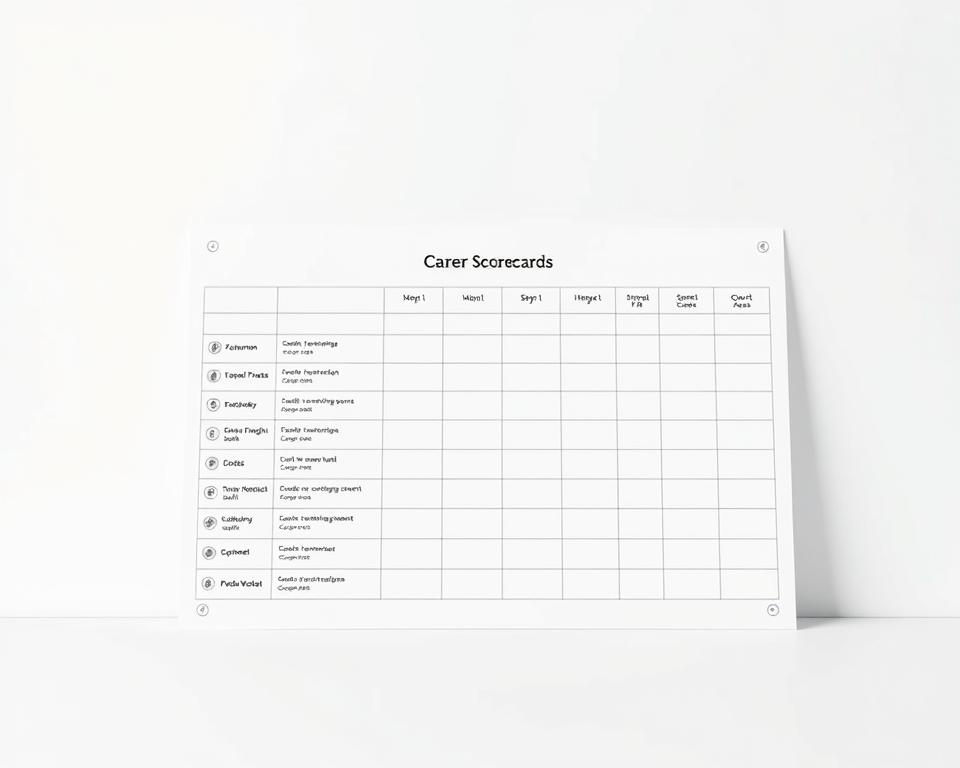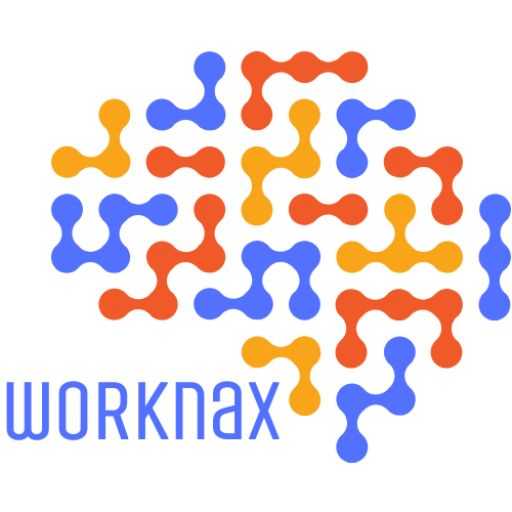Anuncios
medir los resultados del impulso profesional Esto es más importante que nunca en 2024-2025, cuando los presupuestos ajustados y la presión de retención obligan a tomar decisiones prácticas. Necesita un enfoque simple y práctico que ofrezca señales claras sin necesidad de informes exhaustivos. Esta publicación muestra pasos prácticos que puede implementar ahora.
El progreso es multidimensional: combina señales personales, como el compromiso y la retroalimentación, con señales empresariales, como la retención, los ascensos y el rendimiento. En un ejemplo real, la incorporación de conversaciones estructuradas impulsó los movimientos internos y redujo la deserción en 23% en un año. Esto demuestra cómo las pequeñas prácticas impulsan cambios mensurables.
Aquí aprenderá a definir su versión de un triunfo de desarrollo, elegir algunas métricas adecuadas, crear un cuadro de mando liviano, recopilar datos de manera ética y convertir los conocimientos en acciones que su gerente y sus líderes puedan usar. Las métricas no prometen resultados, pero revelan patrones para que puedas ajustar tus objetivos y crecer a tu propio ritmo. Descubre ejemplos prácticos, opciones de KPI y consejos que priorizan la privacidad para que tu camino se mantenga enfocado y justo.
Introducción: Por qué es importante medir tu carrera profesional en 2024-2025
No necesitas paneles complejos para ver si tu trabajo y aprendizaje te están impulsando. Con presupuestos ajustados y una automatización rápida, un seguimiento sencillo te ayuda a optimizar el tiempo y a comunicarte claramente con tu gerente sobre tu progreso.
Contexto actual: presupuestos ajustados, presión de retención y rápidos cambios tecnológicos
Muchos empleados se sienten estancados: 74% afirma que el desarrollo limitado los frena. La automatización desplaza las tareas rápidamente y el agotamiento sigue siendo alto. Estos desafíos hacen que las comprobaciones pequeñas y periódicas sean más útiles que los objetivos puntuales.
Cómo se ven las “métricas simples” para el progreso real
Métricas simples Son algunos hábitos que se mantienen en una nota o hoja. Convierten intenciones vagas en temas que se pueden comentar para reseñas.
- Realice un seguimiento de una nueva habilidad aprendida y una ocasión en que la utilizó en el trabajo.
- Registre la calidad de los comentarios y una oportunidad interna que haya aprovechado.
- Mantenga un control semanal de la energía o el compromiso para proteger la satisfacción.
Por qué funciona esto: Las señales cortas le ayudan a detectar patrones, solicitar ayuda específica y alinear su desarrollo con las necesidades comerciales sin herramientas adicionales.
Define qué significa para ti un “impulso profesional” antes de realizar un seguimiento.
Antes de analizar cualquier tema, tenga claro cómo se ve el éxito este año. Una definición breve y específica guía cada decisión y mantiene el desarrollo práctico.
Traducir los objetivos a largo plazo en resultados a corto plazo
Escribe una visión de tu objetivo a largo plazo en una sola oración y luego divídela en tres resultados a corto plazo que puedas influenciar en tu trabajo actual.
- Objetivo de 90 días: Mencione un logro concreto, como dirigir una reunión con un cliente u obtener una microcredencial.
- Habilidad aplicada: Elija una habilidad emergente para practicar en cada sprint.
- Objetivo de la experiencia: establecer un recuento mensual para realizar observaciones, presentaciones o tutorías.
Establecer una línea base: rol, habilidades, proyectos, retroalimentación y satisfacción
Capture una instantánea de una página: su función, responsabilidades principales, habilidades semanales, resultados recientes del proyecto, comentarios típicos y una puntuación de satisfacción de 1 a 10.
Tenga en cuenta las limitaciones que enfrenta (mentores, tiempo o herramientas limitados) y haga una lista de soluciones simples, como el coaching entre pares o el microaprendizaje.
- Enumere las dos habilidades principales que desea fortalecer y una que desea practicar.
- Traducir los objetivos en medidas cortas (por ejemplo, “tener dos resultados este trimestre”).
- Alinee los resultados con el éxito del equipo: plazos, defectos, ingresos o satisfacción del cliente.
Mantenlo ligero: Una línea base de una página es fácil de actualizar cada trimestre. Revísala para recalibrar, celebrar los logros y orientar tu desarrollo hacia un progreso constante.
Mida los resultados del impulso profesional con los KPI adecuados
Utilice señales sencillas y centradas en el rol para mostrar cómo su aprendizaje se convierte en valor real para el lugar de trabajo. Elija algunos indicadores en cuanto a personas, oportunidades, habilidades, impacto, canal de desarrollo y finanzas para poder hablar claramente del progreso.
Señales centradas en los empleados
Qué seguir: Compromiso semanal (1–10), satisfacción trimestral y notas de calidad de retroalimentación. Cómo realizar el seguimiento: Mantenga un breve registro de las puntuaciones y una frase de contexto después de cada revisión.
Señales de oportunidad y habilidad
Qué seguir: solicitudes internas, entrevistas, promociones consideradas, nuevas habilidades y certificaciones, y con qué frecuencia las aplica. Consejo: Registre un ejemplo aplicado por habilidad, por ejemplo, “automaticé un informe, ahorré 2 horas/semana”.
Impacto, canalización y ROI simple
Impacto: Monitoree los cambios en las calificaciones de desempeño, las métricas de entrega y las contribuciones directas al negocio. Realice un seguimiento de los hitos de permanencia y de si aparece en las listas de sucesión.
Marco de ROI: Enumere los costos (tiempo, honorarios) y los beneficios (tiempo ahorrado, menos errores). Tenga cuidado al atribuir la causa: utilice estos indicadores para orientar las conversaciones, no para afirmar certeza.
“Las señales pequeñas y consistentes ofrecen un panorama más claro que las grandes afirmaciones ocasionales”.
Cree un cuadro de mando sencillo que pueda mantener
Un cuadro de mando compacto convierte los hábitos semanales en señales claras que puedes implementar. Solo ocupa una página para que quepa en una reunión o en tus notas semanales.

Elija entre 5 y 7 métricas que se ajusten a su función y estrategia
Elegir indicadores Que reflejen sus objetivos y las prioridades del equipo. Ejemplos: habilidades aplicadas por sprint, tendencia de satisfacción, una métrica de impacto del proyecto, calidad de la retroalimentación y nivel de compromiso.
Cadencia: hábitos semanales, revisiones mensuales, reinicios trimestrales
- Actualizaciones semanales de 10 minutos: registre la participación, el recuento de prácticas de habilidades y una oración de contexto.
- Revisión mensual de 30 minutos: agregue una línea narrativa que vincule las actividades con el desempeño o la entrega.
- Reinicio trimestral: archiva una instantánea y refine sus objetivos en función de lo que funcionó.
Mantenlo ético y práctico: Realice un seguimiento únicamente de sus propios datos, evite los detalles confidenciales y priorice el aprendizaje sobre la perfección.
“Las historias acompañadas de números ayudan a influir en las decisiones: muestran cómo el esfuerzo se traduce en resultados”.
- Haga que la tarjeta sea visual: semáforos o flechas para indicar las tendencias para que pueda escanearla rápidamente.
- Asigne cada métrica a una decisión: si disminuye el compromiso, programe una charla sobre la carga de trabajo; si la práctica se estanca, solicite una tarea complementaria.
- Limite la administración extrayendo información de LMS o tableros de proyectos y concéntrese en los patrones, no en cada detalle.
Resultado: una herramienta ágil y repetible que le ayuda a realizar un seguimiento del desarrollo, respaldar las conversaciones de avance y mostrar cómo medir el éxito de una manera sencilla.
Recopile datos de forma inteligente y ética
Las buenas prácticas de datos comienzan con una regla simple: rastrea lo que necesitas, nada más. Esto mantiene tu trabajo útil y respeta la privacidad. Céntrate en fuentes poco utilizadas que sean fáciles de actualizar y defender en las conversaciones.
Fuentes que puedes utilizar
Fuentes prácticas: Extraiga información de las notas de desempeño semanales, las finalizaciones del LMS, las encuestas de pulso breves que usted cree y una agenda breve para los registros del gerente.
¿Por qué funcionan? Requieren poco esfuerzo, están vinculados a tus tareas y son fáciles de mostrar durante las revisiones.
Perspectivas cualitativas que importan
Trate las aportaciones cualitativas como señales de primera clase. Capture los aspectos más destacados de las conversaciones sobre su carrera profesional, fragmentos de retroalimentación de 360 grados y testimonios breves que describan cambios concretos en su trabajo.
- Guarde citas breves con consentimiento.
- Anote ejemplos de nuevas habilidades aplicadas en el trabajo.
- Tasas de participación récord: un alto nivel de compromiso (por ejemplo, 75% realizando al menos una actividad) indica interés.
Ética, privacidad y barandillas simples
Proteja la privacidad: rastree solo sus datos, almacénelos de forma segura y evite detalles confidenciales sobre otros empleados o la empresa.
Utilice barreras éticas: céntrese en el desarrollo en lugar de en la vigilancia y pida permiso antes de citar a otros.
- Visibilice las oportunidades: enumere las publicaciones internas aplicadas, los chats informativos y los roles solicitados.
- Llene los vacíos de mentoría con reuniones entre pares o breves “intercambios de habilidades”.
- Agregue contexto de liderazgo: observe lo que su gerente y su liderazgo enfatizan y cómo se alinean sus elementos.
- Revisar los métodos trimestralmente para mantenerlos prácticos y alineados con las normas de la empresa.
Convierta las métricas en acciones y resultados visibles
Pequeños patrones en tus notas pueden indicar promociones, aumentos o asignaciones que te exijan más si actúas en consecuencia.
Patrones de puntos
Revisa tu cuadro de mando mensualmente para detectar tendencias. Busca proyectos que te hayan dado visibilidad o te hayan generado nuevas oportunidades.
- Consejo: Marque los elementos que dieron lugar a elogios o agregaron alcance: estos a menudo se relacionan con charlas de promoción.
- Observa qué tareas aumentaron tu rendimiento y cuáles no.
Cerrar brechas
Si la práctica de una nueva habilidad se retrasa, elija un proyecto pequeño para aplicarla. Solicite un alcance y un cronograma definidos.
- Encuentre un mentor o patrocinador para recibir comentarios específicos.
- Considere un movimiento lateral para ampliar habilidades y redes; eso puede acelerar el avance.
Comunicar el progreso
Incluya una vista general de una página en las revisiones. Conecte sus elementos con los objetivos del equipo y proponga pasos claros a seguir.
- Comparta un ejemplo claro de impacto (tiempo ahorrado o elogio del cliente).
- Solicite un recurso específico (capacitación, rotación o tiempo de práctica) y cómo lo rastreará.
“Trate las revisiones como una sesión de estrategia: alinéese con un objetivo medible para los próximos 30 a 90 días”.
Ejemplos reales, puntos de referencia y desafíos que puedes enfrentar
Ejemplos concretos de equipos reales revelan qué es lo que realmente impulsa el progreso interno de las personas. Utilice estos casos y puntos de referencia como guías prácticas, no como garantías. Muestran caminos que puede adaptar a su trabajo y sus objetivos.
Ejemplos que se relacionan con el avance
Participación → movimientos internos: Cuando más empleados se unieron al aprendizaje estructurado y la tutoría, una organización vio aumentar la movilidad interna y disminuir la deserción en 23% después de agregar conversaciones sobre carreras profesionales.
Certificaciones → aumento de rendimiento: Obtener credenciales relevantes para el rol y aplicarlas en proyectos a menudo precede a mejores evaluaciones de desempeño y un impacto visible.
Puntos de referencia pragmáticos para el seguimiento
- 74% de los empleados se sienten subdesarrollados: use esto como una llamada de atención para registrar una habilidad practicada por mes.
- El 87% de las empresas espera una brecha de habilidades: realice un seguimiento de las publicaciones internas que explora y las habilidades vinculadas a esos roles.
- Riesgo de automatización del seguimiento: muchos trabajos tienen tareas automatizables 30%+, así que tenga en cuenta las tareas que puede mejorar para proteger su puesto.
Desafíos comunes que puedes enfrentar
Las brechas de mentoría son reales: alrededor del 85% carece de mentores, aunque la mayoría los valora. La escasez de mentores, la automatización acelerada, el agotamiento y los estereotipos laborales pueden frenar el progreso.
Documenta tus experiencias y resultados para contrarrestar los sesgos. Aprovecha pequeños momentos de liderazgo (como dirigir una reunión o asesorar a un compañero) para generar un impacto visible sin sobrecargar tu agenda.
Apoya ese progreso compuesto
- Establecer redes dentro y fuera de la empresa para descubrir oportunidades y recursos.
- Consulte las bolsas de trabajo internas para conocer movimientos laterales que amplíen las habilidades y preparen el terreno para el avance futuro.
- Utilice la educación continua y la visualización (ensayo mental) para prepararse para momentos de gran importancia.
“Marque su propio ritmo, utilice los recursos disponibles y repita: los pasos constantes generan un avance profesional duradero”.
Conclusión
Terminar fuerte: Las rutinas simples y las notas honestas generan el tipo de impulso que da sus frutos.
Define tus objetivos, elige algunos KPI claros, mantén un pequeño cuadro de mando y revísalo con frecuencia para medir el éxito Sin complicar demasiado su trabajo.
Números de balance, como los nuevos aplicados habilidades y tendencias de desempeño, con historias breves que muestran cómo su desarrollo creó valor comercial real.
Prepárese para los contratiempos: es normal cambiar las prioridades, tener poco tiempo o cambiar de roles. Ajuste los objetivos y los pasos para que su plan siga siendo realista y útil.
Busca mentores, toma cursos especializados o recurre a especialistas cuando necesites ayuda específica. Realiza una autoevaluación trimestral rápida de tu satisfacción y oportunidades de liderazgo.
Actualiza tu cuadro de mando esta semana, programa una conversación enfocada y elige una pequeña habilidad para aplicar en el próximo sprint. Sigue aprendiendo, sigue aprendiendo, crece y date espacio para crecer.



